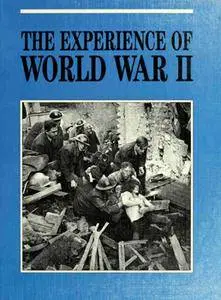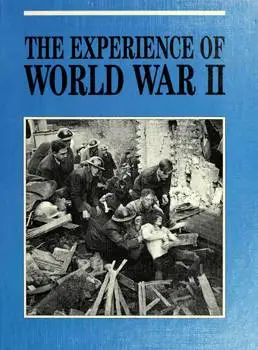The Experience of World War II
Oxford University Press | 1989 | ISBN: 0195207920 | English | 262 pages | PDF | 83.8 MB
World War II was the most destructive and all-encompassing war the world has known. Fought by a total of 57 belligerent nations, it exacted a high toll in human life and civilization–killing millions and razing entire cities. It also served as a catalyst for many of the social and political upheavals that characterized the second half of the twentieth century. The Experience of World War II offers an absorbing account of this war, beginning with the early aggressions of Germany and Japan and continuing through to the post-war Nuremberg Trials. Written by a team of 16 scholars, the book not only charts the development of the war but provides a penetrating tnalysis of its political, military, and social dimensions. Among the early causes of the war, for instance, was Japan's reaction against Western industrialism and democracy and its renewed faith in the military (with its Samurai tradition). The writing throughout is lively, but especially that chronicling the drama of military events: the German Blitzkreig, the bombing of Pearl Harbor, battles on sea as well as land. The human effects of the war are also documented, with coverage of the soldier's life, the grim reality of life in the prisoner-of-war camp, and the situation on the home front. As is shown, technology played a large part in World War II, from the use of gas to exterminate large numbers of unwanted prisoners to the use of radio to speed communications on the battlefield. Finally, in the aftermath of the war, the atrocities that came to light defined a new category of war crime–the crime against humanity–under which people were tried at Nuremberg. The Experience of World War II is more than just a history of the Great War. Organized for accessibility into five parts–"Theaters of War," "Fighting Services," "Mobilization of Peoples," "Civilians in the Front Line," and "The Aftermath"–with "datafiles" of information at the start of each chapter, it is also a ready reference. The book provides an enormous amount of visual material: more than 300 photographs, many of which are in color, and 50 pieces of full-color artwork, including maps and charts. Other features include chronologies, a complete index, and lengthy treatments of special topics, such as "The Decision to Drop the Bomb," "The Tank," and "The War and American Women." Superbly written, rich with illustrations, and filled with fascinating detail, this is the ideal introduction to the Second World War, in all its complexity, as well as a valuable reference for students and general readers alike.



